[ An innovative multi-dimensional additive manufacturing process ]

Perspective view of Harbor

The role of an architect is transforming at a faster rate than ever before in history. Innovation is the key to ensuring the future of the architectural occupation and place within our communities. Staying with or ahead of the curve of future innovation is key to our future. The exponential increase of information within the building environment is allowing us to analyze our spaces, structure, and other elements much faster and more efficiently. With this information we should be able to builder faster, smarter, and more environmentally friendly. We must continue to innovate and question what we are doing. We must ponder upon greater horizons.
[ To be scientifically minded ]
[ To be innovative ]
[ To be curious ]
[ To be human ]
The current design build process is limited to certain dimensions of manufactured material and processes. This creates a stagnant flow of production and innovation. In order to change how we think and perceive construction we must reevaluate many areas of our process. The areas of investigation that are explored in this project are fabrication, materiality, and parametrics. These three areas are at the forefront of innovation in the industry and are pushing the field forward. Three dimensional printing created a gateway for these ideas to cross pollinate and give birth to new innovation. By intertwining technology from boat manufacturing, high performance sail construction, FDM modeling, BIM modeling, finite element modeling, advanced building material research, and large scale gantry processes printing a building in serial manner becomes a reality. By three dimensionally printing buildings we can use local materials indigenous to the area, reduce the amount of energy and material used in construction, control the quality at very high resolution, create new geometries, and construct buildings at a rapid rate.
These diagrams show concepts for a gantry system being used as the 3D printing platform. Inspiration was taken from shipping container yards where all the organization and movement of the containers is controlled by large gantry systems via satellite. The diagram below shows the concrete being mixed and pumped up the gantry system to the printing head. All of these systems would be computer controlled to monitor the set time of the concrete and the consistence, both very critical for 3D printing. In the future building will be able to be printed by satellite control remotely without any human being present.
These gantry systems can be assembled in remote locations and can print themselves a foundation. This will allow underdeveloped areas to build world class buildings and reduce the immediate environmental impact on the site. This could be applied to natural disaster response deployments, third world country support, low income housing, and even making buildings on other planets. The process of 3D printing buildings has the ability to change the world. It is already changing many industries such as the medical industry and the aerospace industry. Organs are now being 3D printed. Skin grafts are printed with your own skin. Fuel injection valves are printed out titanium for Boeings 747’s. Space X 3D prints many of their parts for their space crafts and rockets.
The site was generated by first creating natural points of attraction. These were created by circulation intersections, viewpoints, boundaries, and extending lines, and transition points. They were then all linked together through lines. An algorithm was then applied to the lines which attracted them together based on their proximity and density. Once the lines settled a clear outline of the result was created. Multiple iterations were performed by varying the settings until a desired result was chosen.

Site: Jacksonville, FL

Site influences

Path optimization model: exploration to be used as an interactive model for site influences
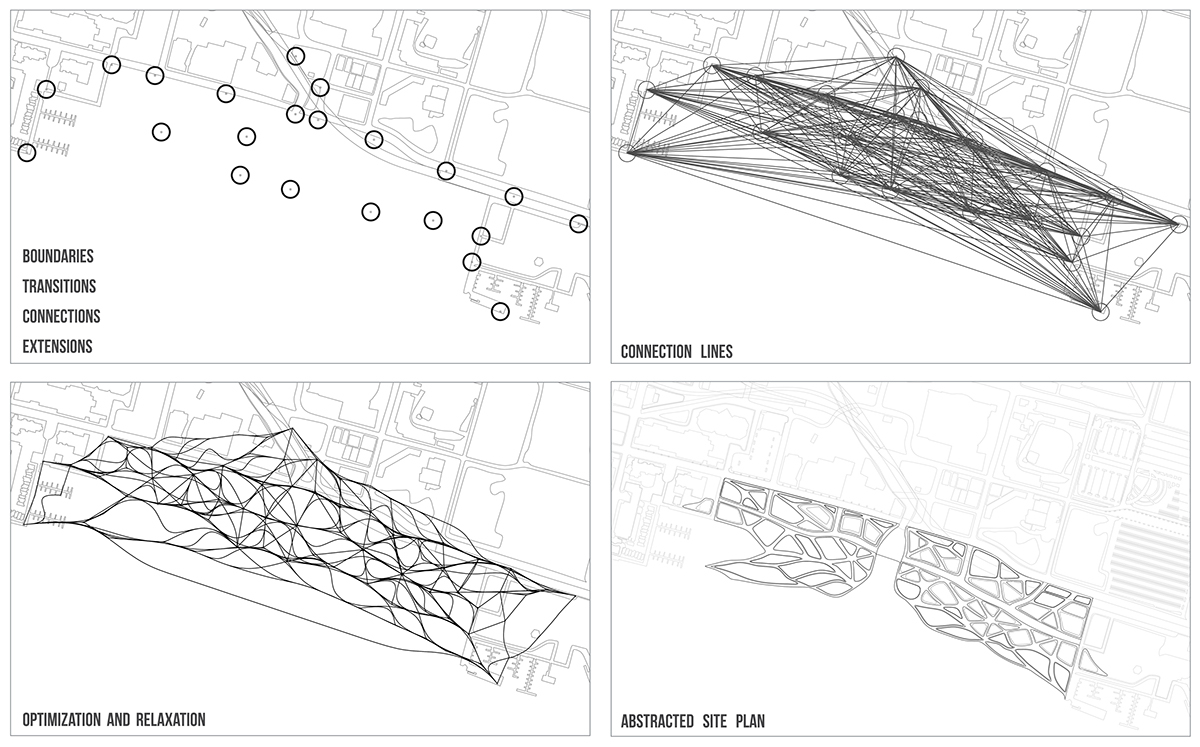

Path optimization model integrated into the site
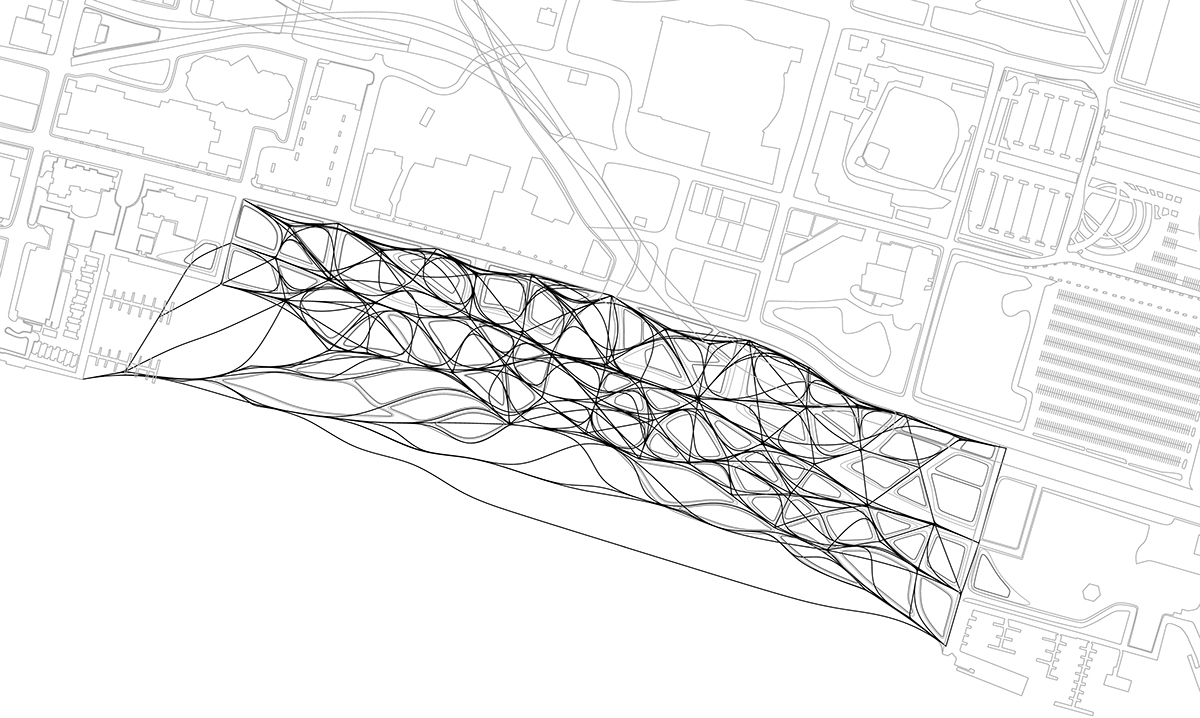
Final iteration chosen for the path optimization model for the site organization

Massing plan
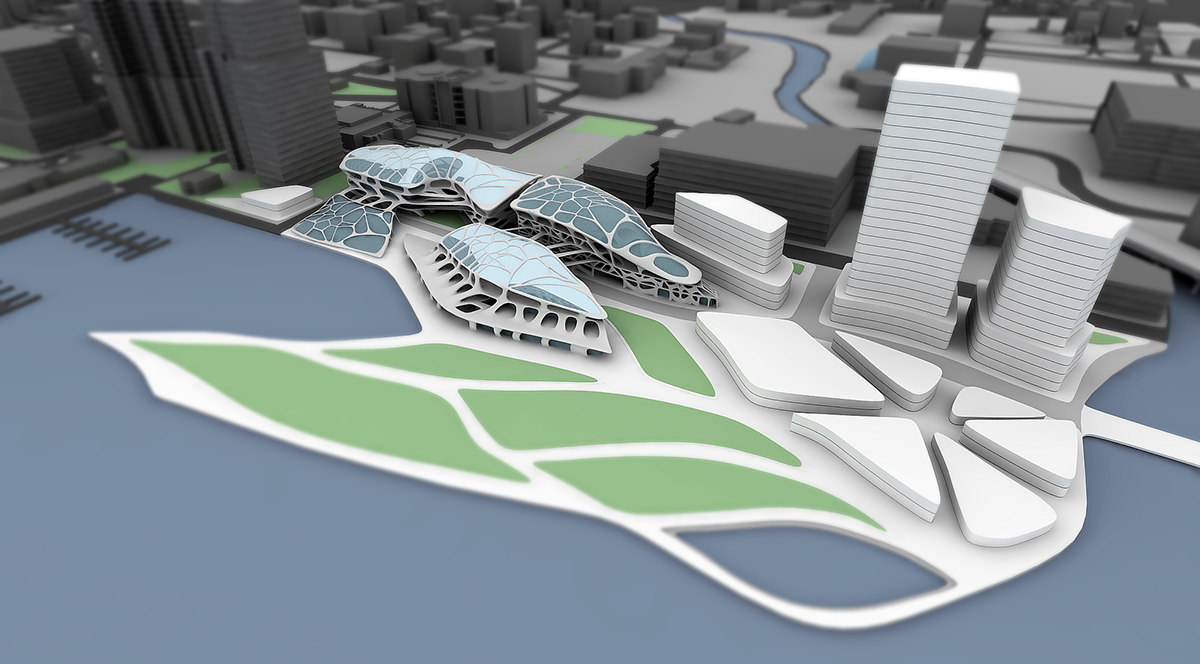
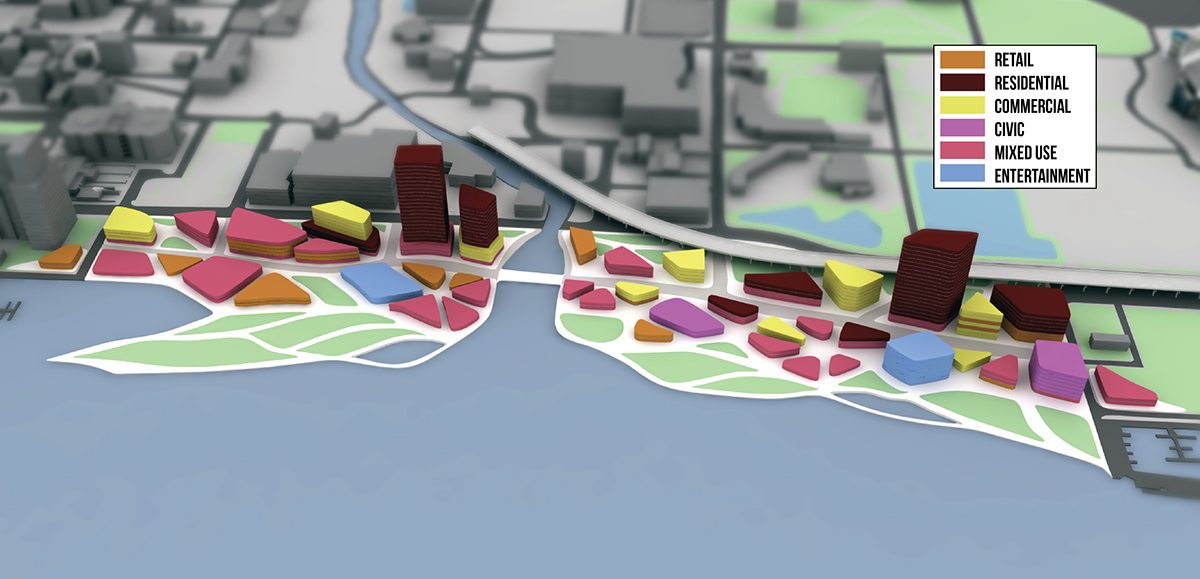
Programmatic requirements color coded
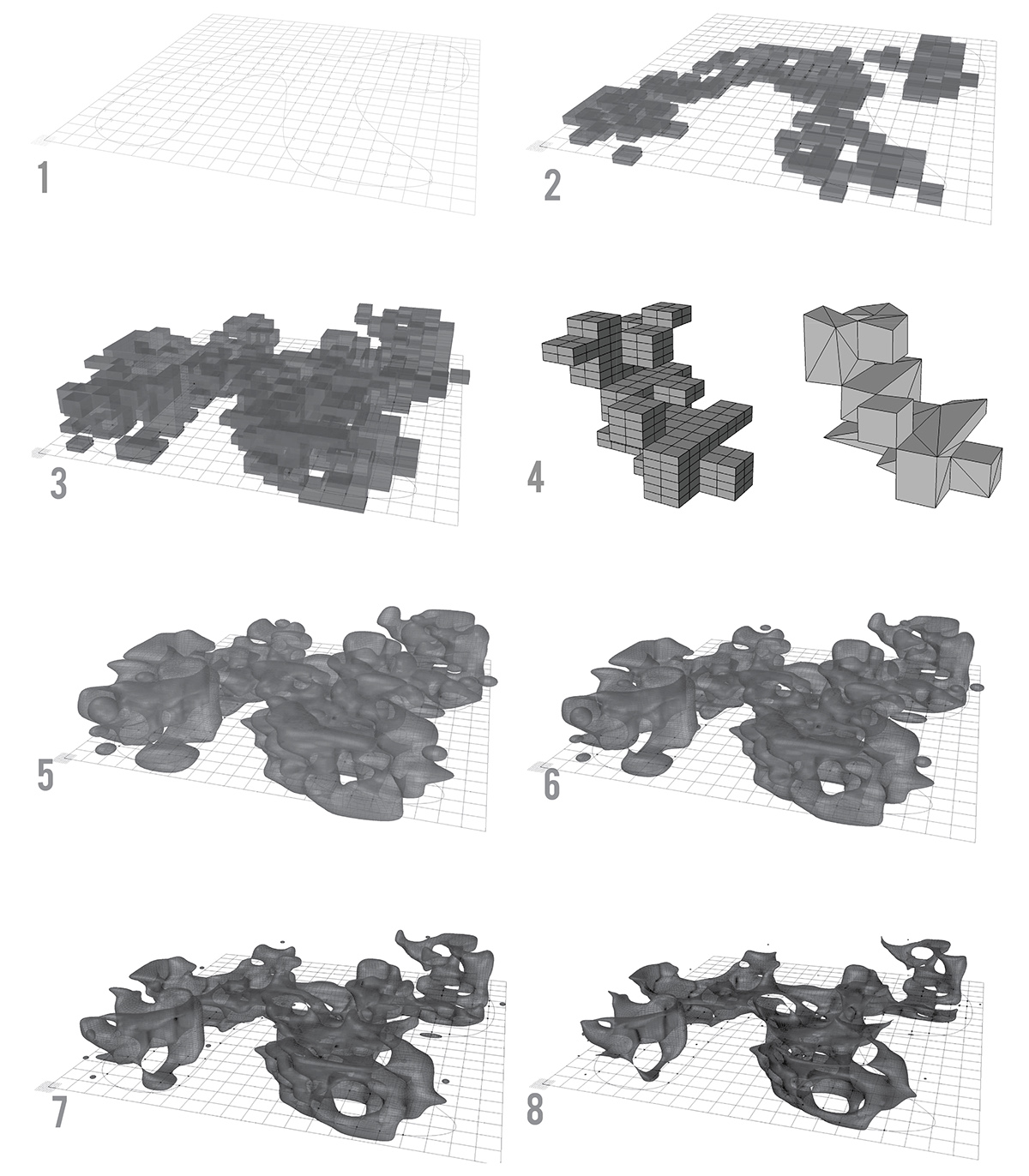
Cellular automation geometry exploration

Geometric language exploration
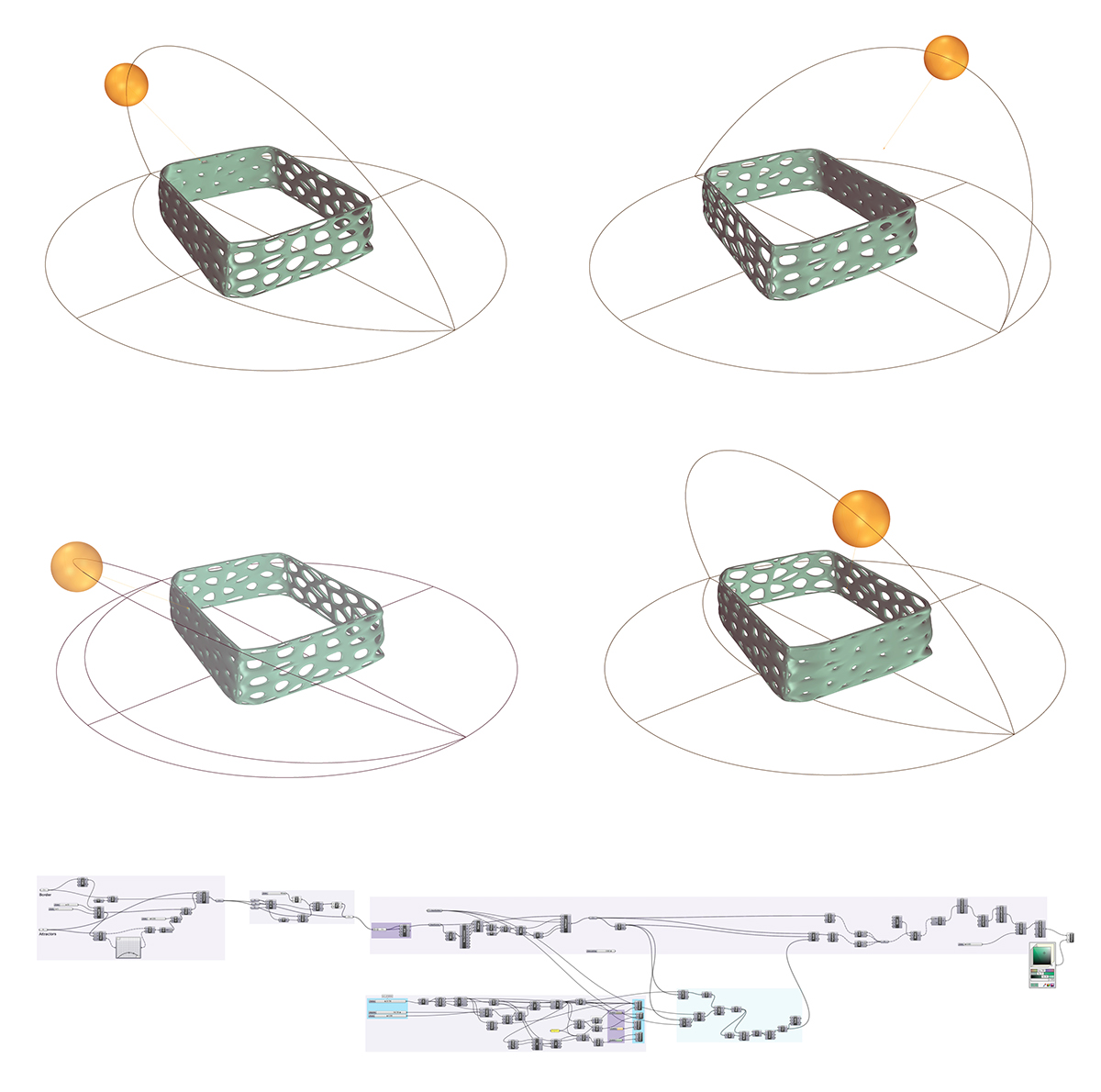
Sun response diagrams and geometry definition: allowed the facade openings to change apertures to create optimum lighting conditions


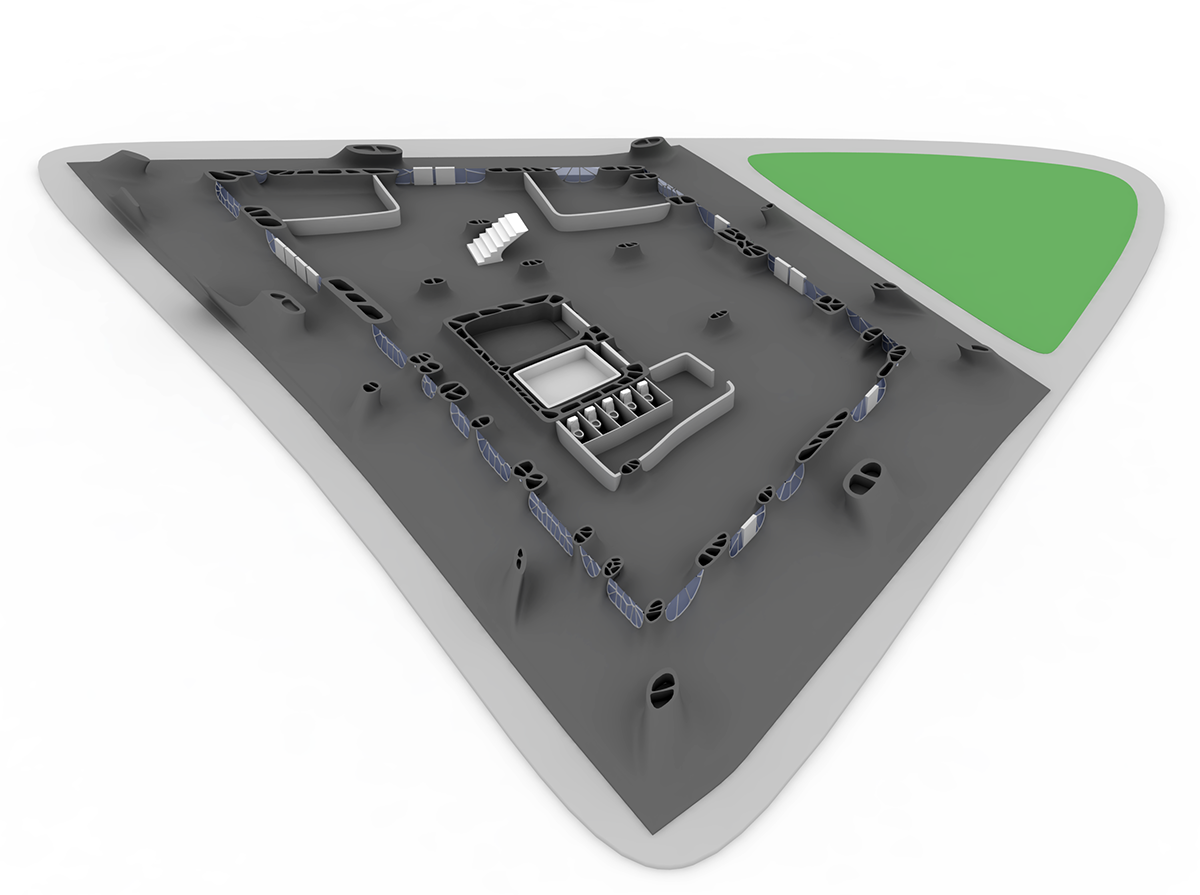
3D floor plan showing wall cavities and facade opening integration

3D section revealing egress conditions, building structure, and integrated mechanical systems

Partial sectional diagram showing stair integration, columns, elevator, mechanical and floor systems, and window openings

3D printed models
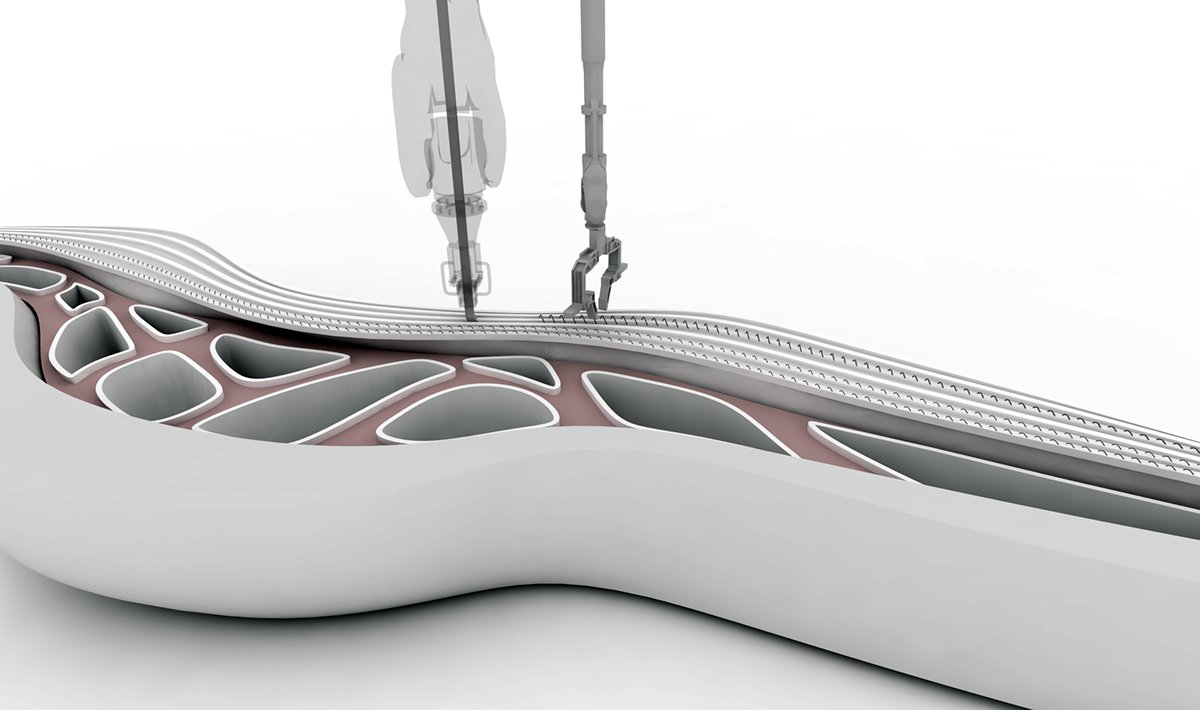
Wall section being 3D printed showing the different components and layers

The spiral material is the structural reinforcement being placed as the wall is being printed

3D printing process of one of the buildings on the site
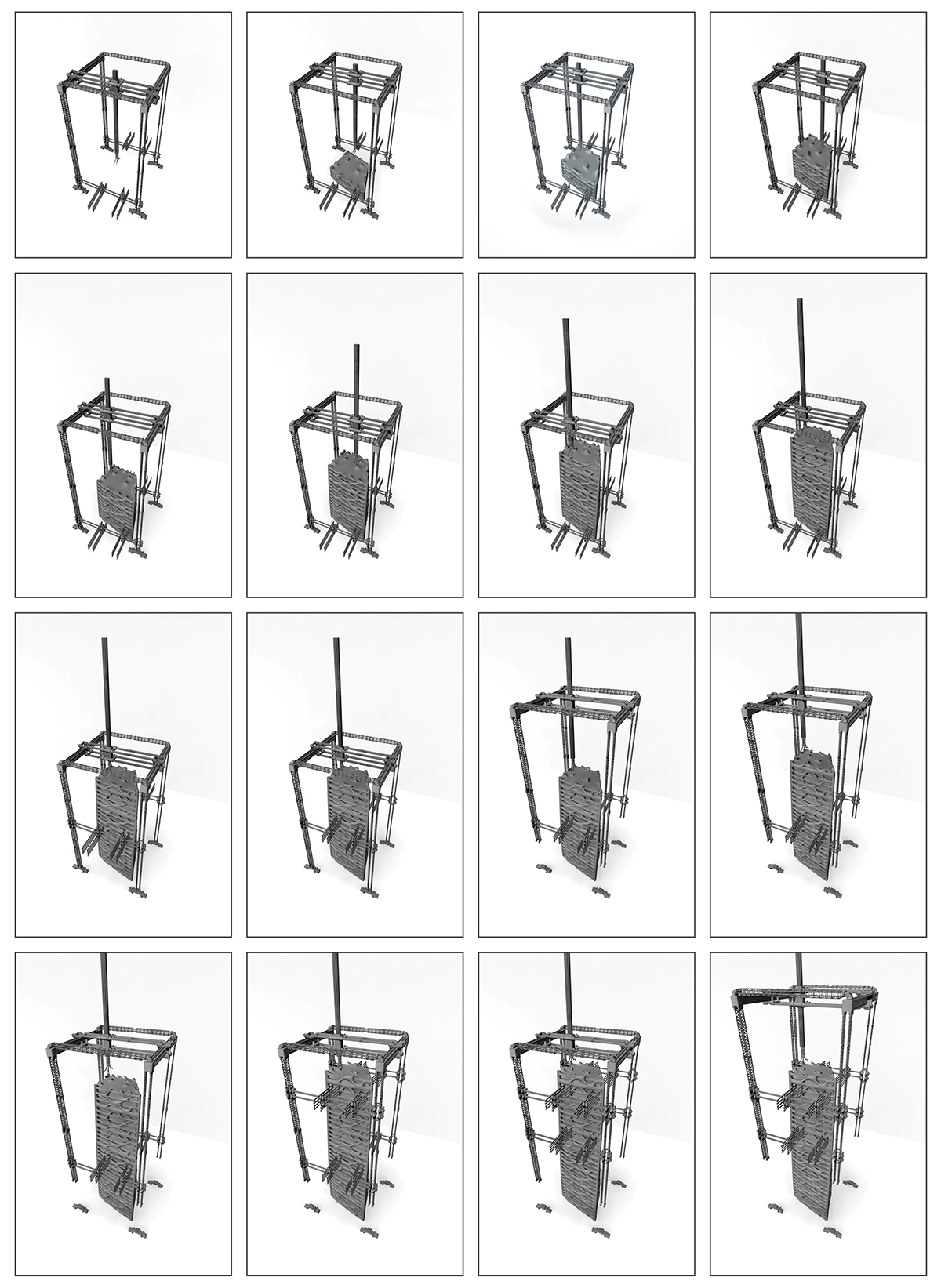
First prototype gantry system designed to clamp onto the building to print buildings over six stories

Process of creating a support system for floors and other components to printed one
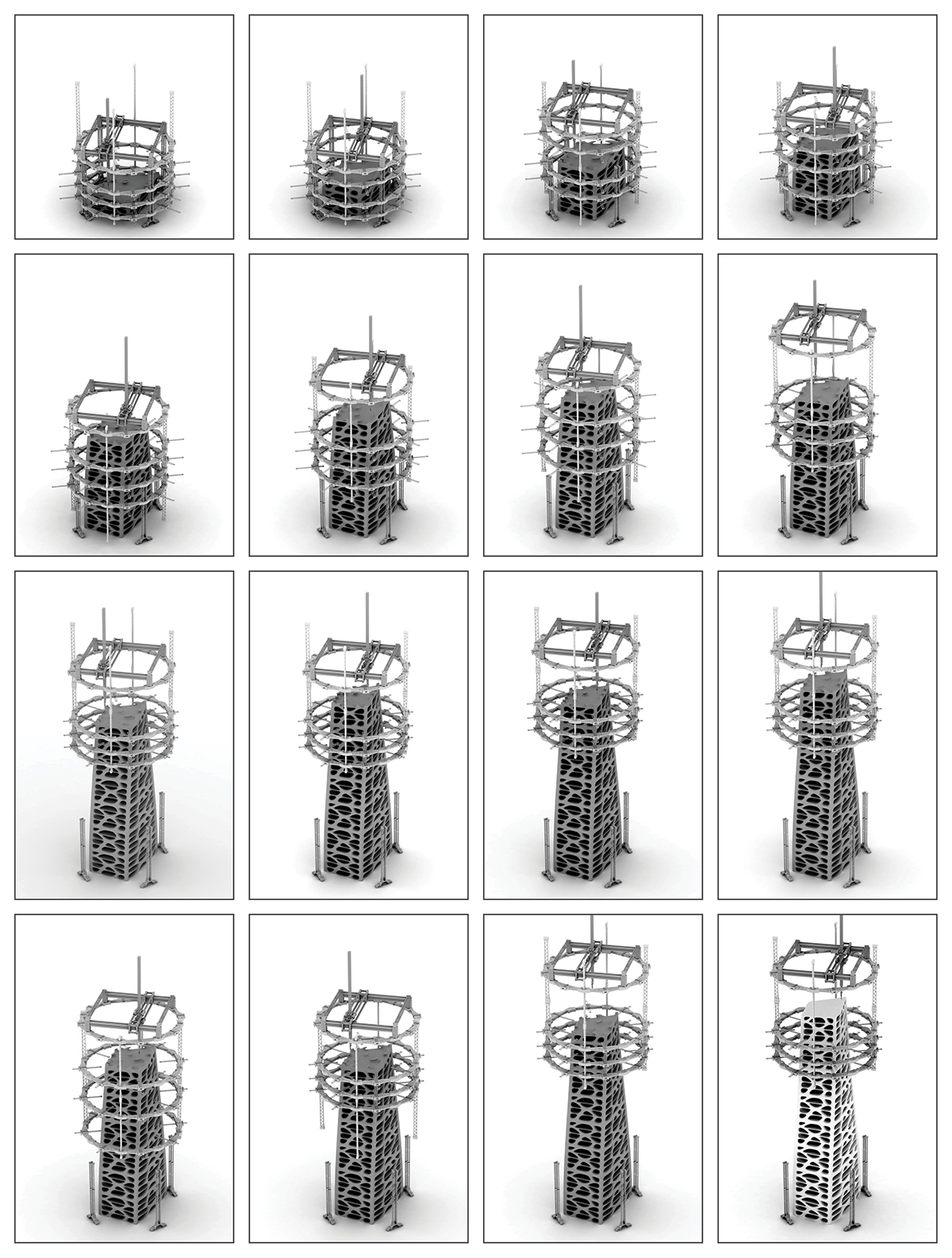
Second prototype gantry system designed to clamp onto the building to print buildings over six stories. This prototype is more stable by creating more connection points to the building reducing lateral forces.
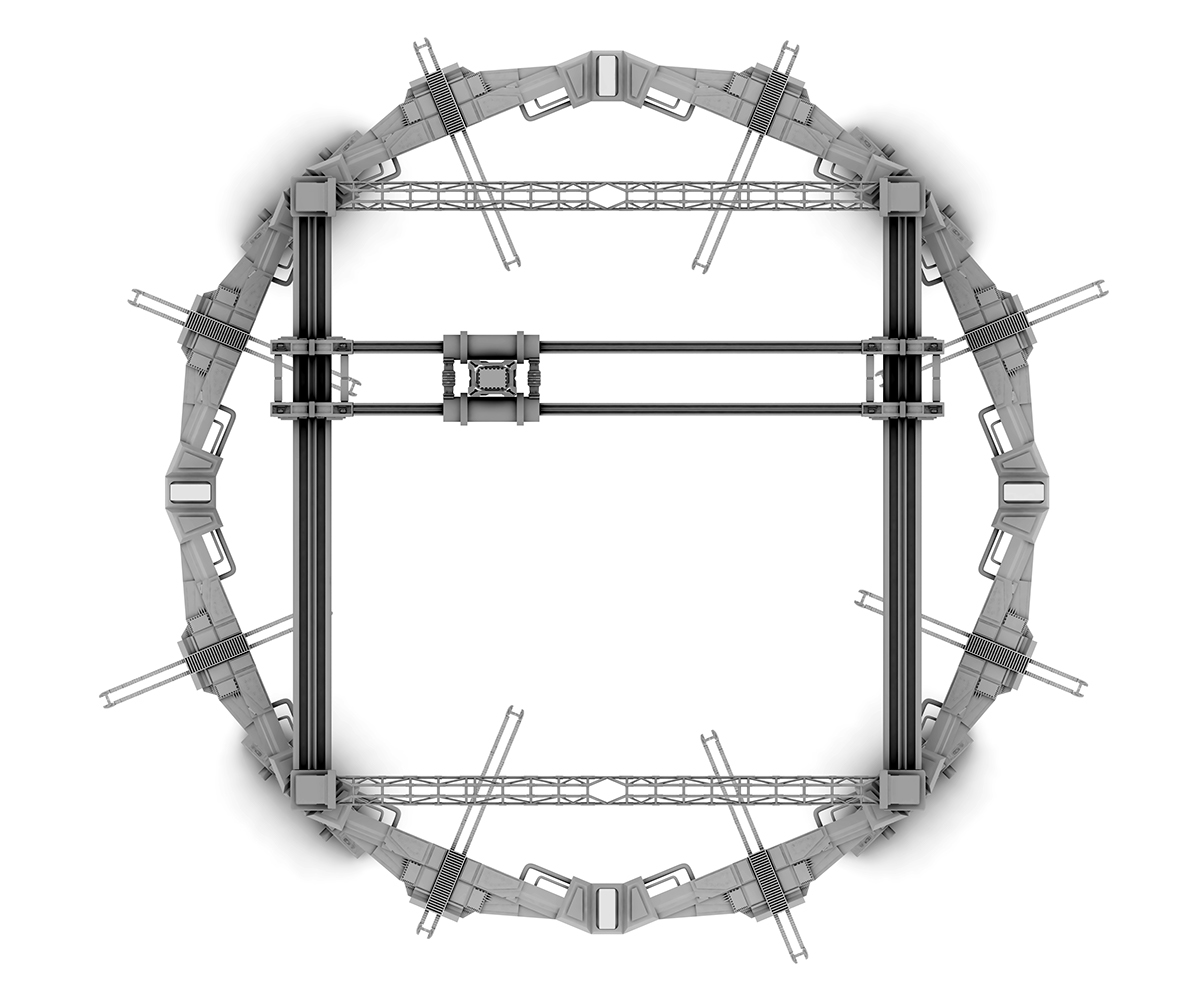
Detail components of the second gantry prototype

Final master plan

Site section going through one of the main buildings




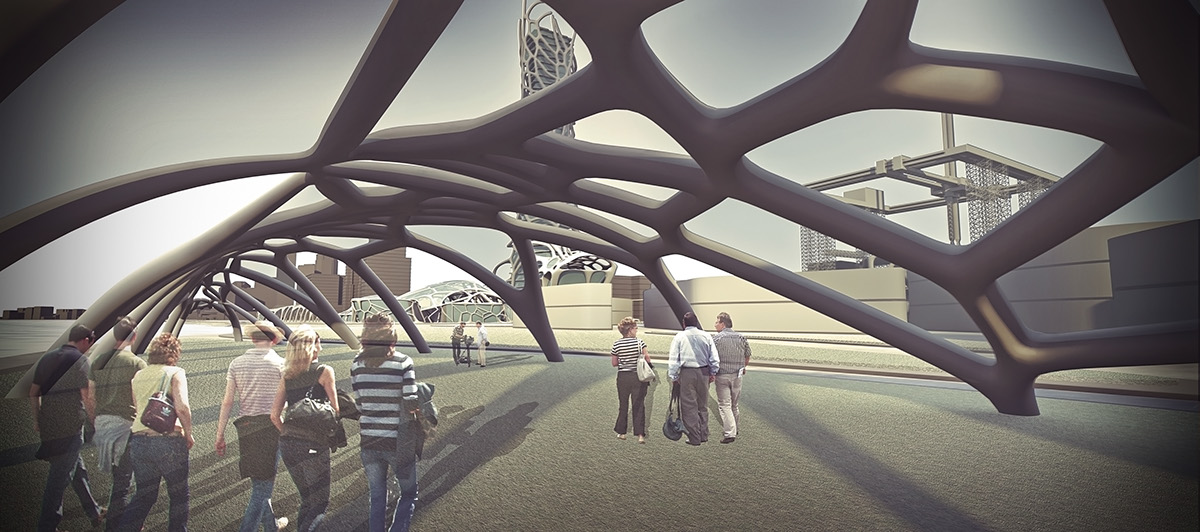


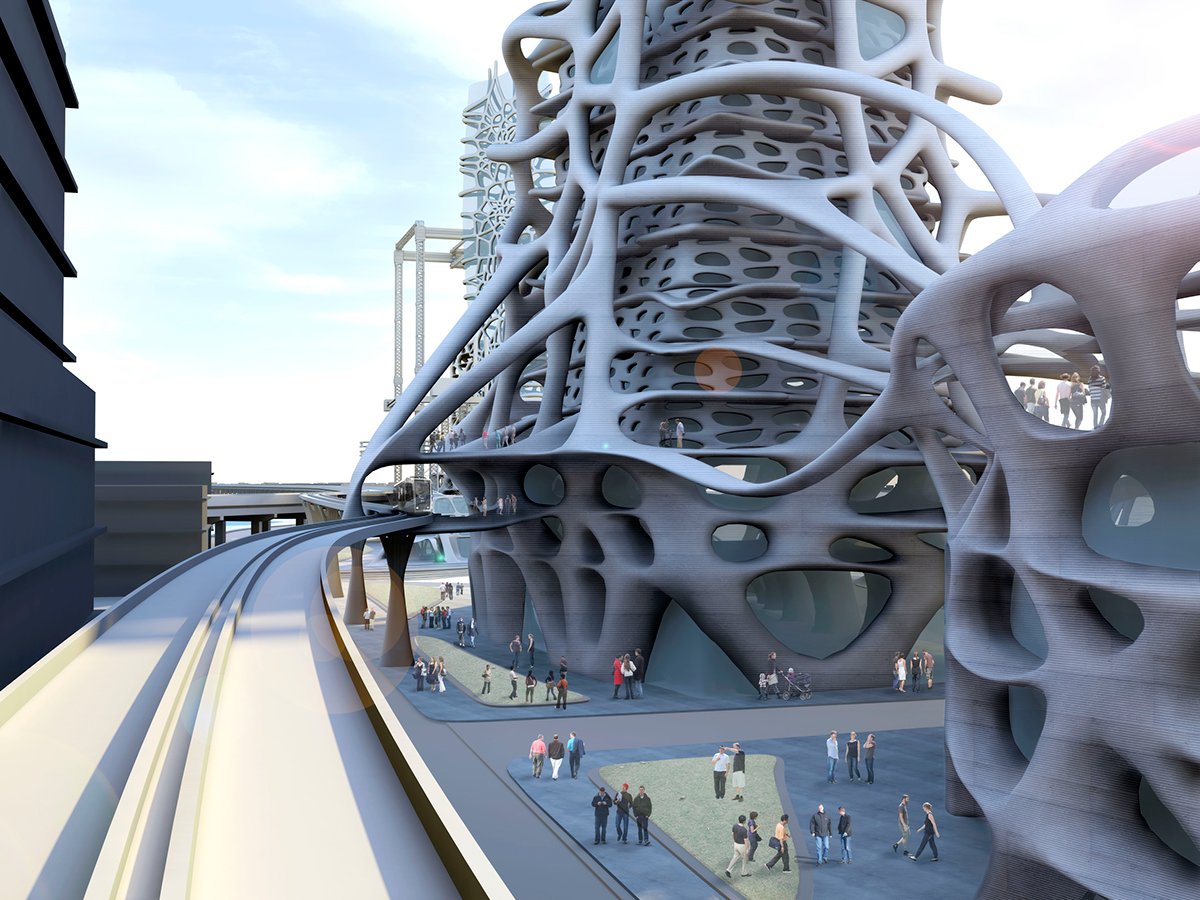
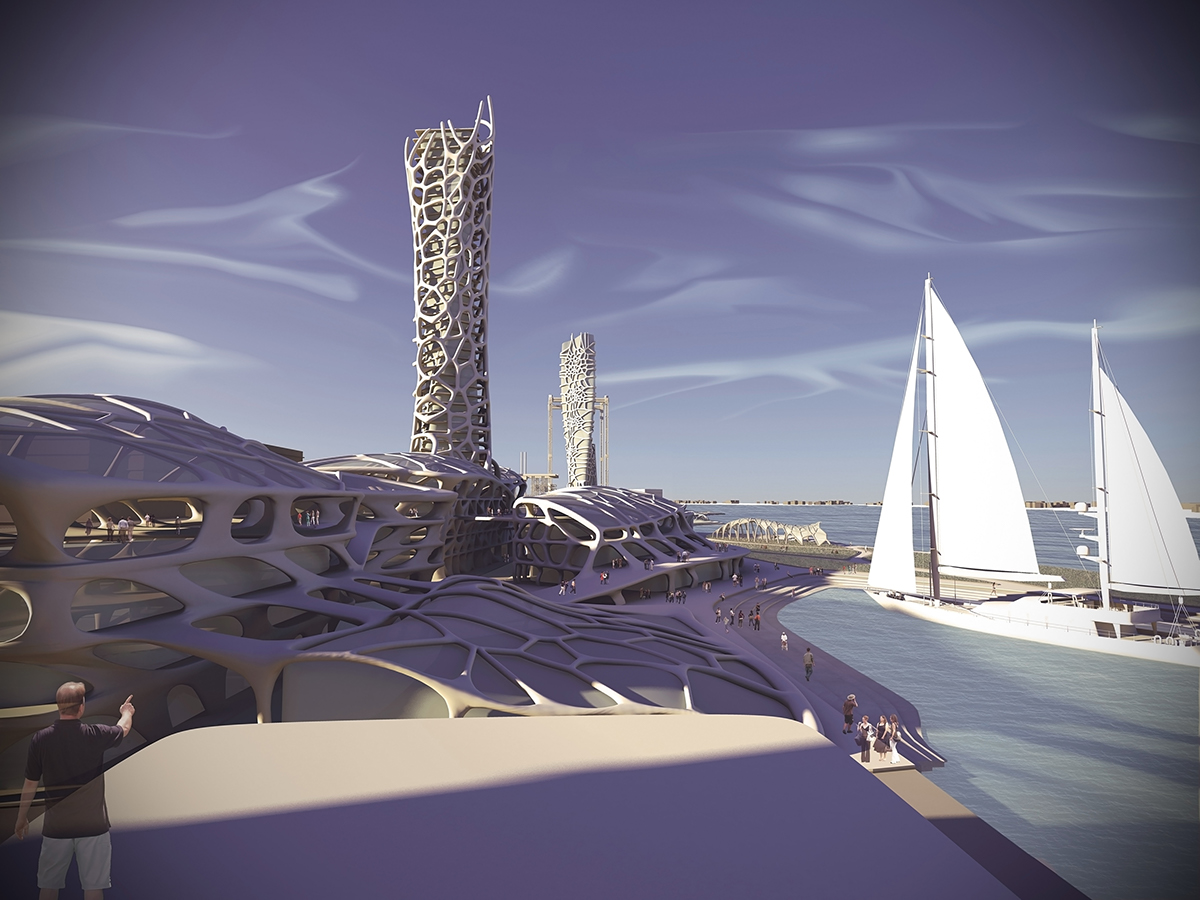

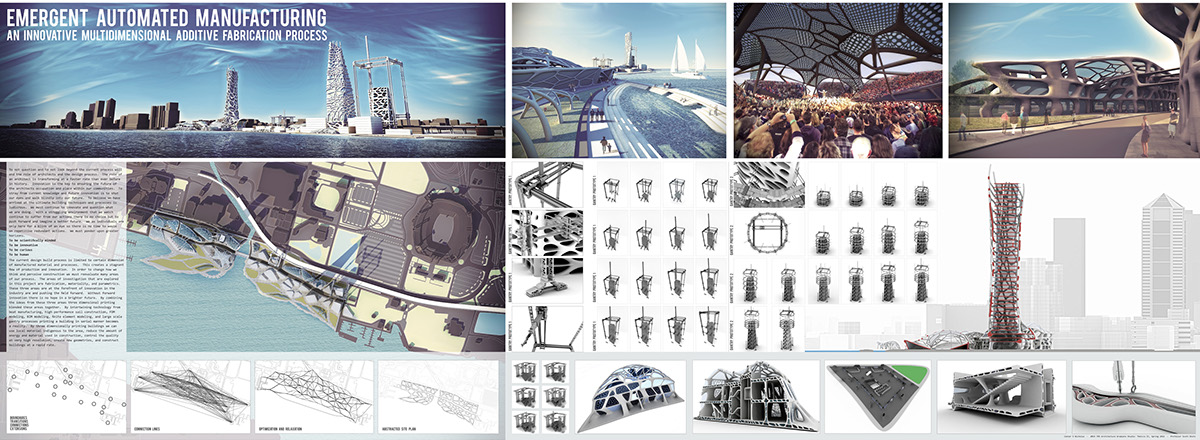
Final boards
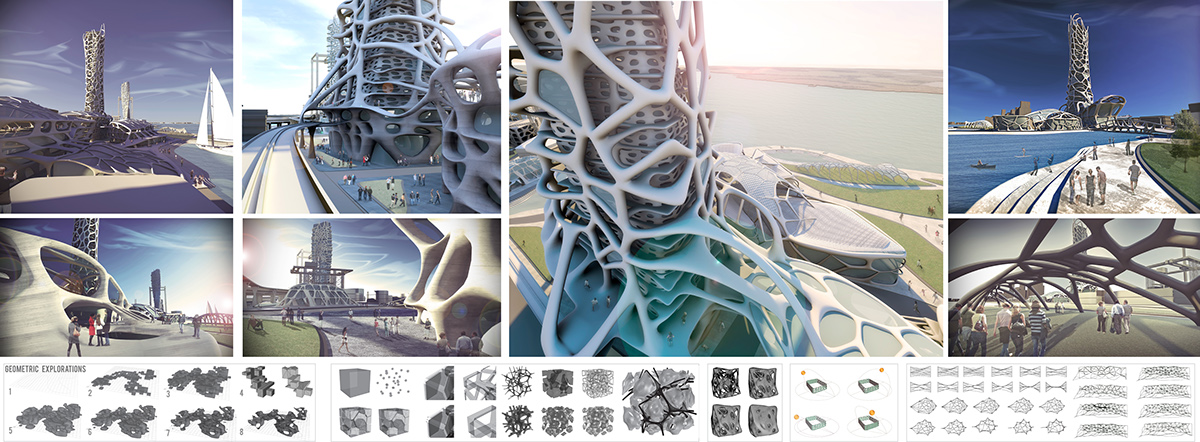
Final boards


